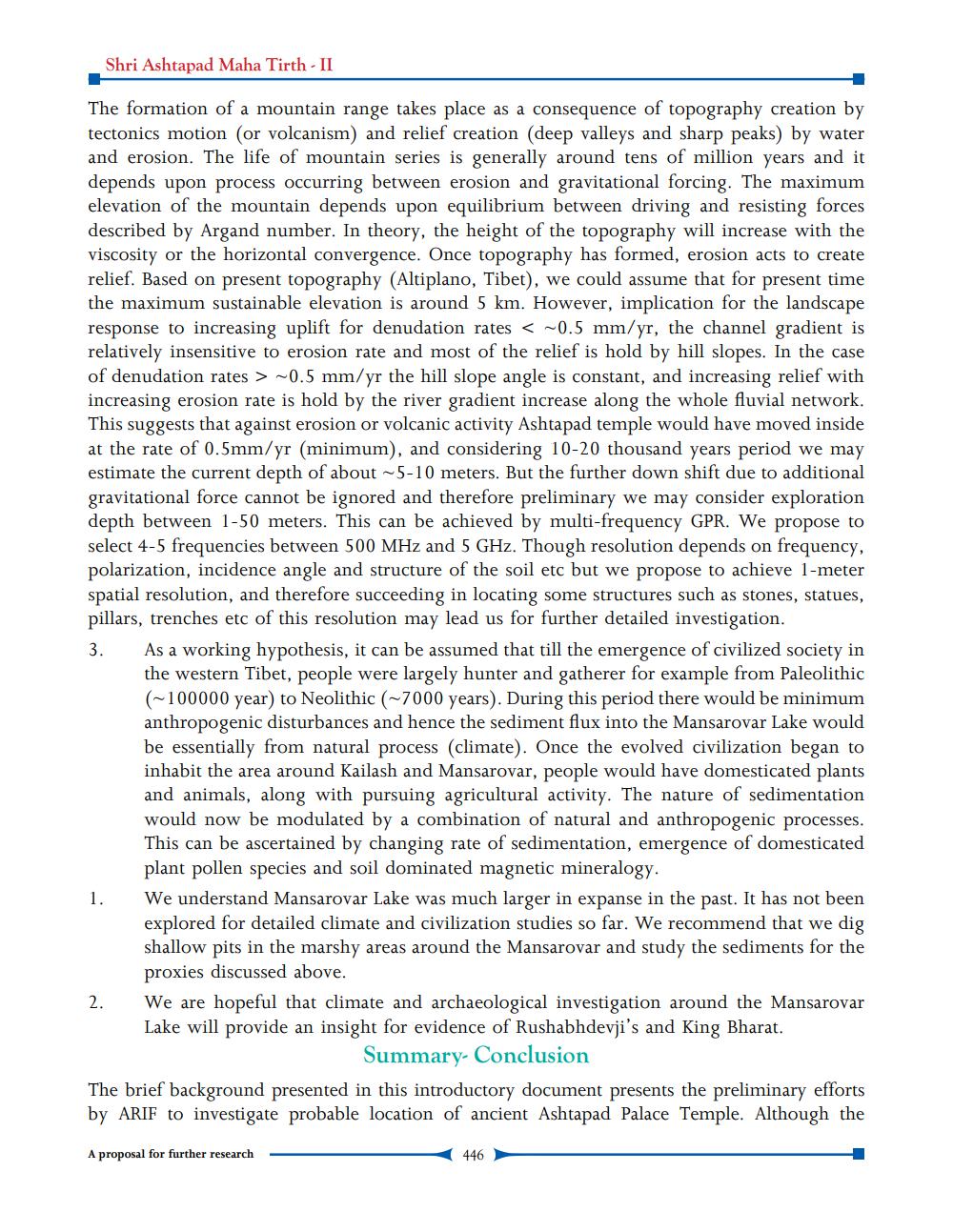________________
Shri Ashtapad Maha Tirth - II
The formation of a mountain range takes place as a consequence of topography creation by tectonics motion (or volcanism) and relief creation (deep valleys and sharp peaks) by water and erosion. The life of mountain series is generally around tens of million years and it depends upon process occurring between erosion and gravitational forcing. The maximum elevation of the mountain depends upon equilibrium between driving and resisting forces described by Argand number. In theory, the height of the topography will increase with the viscosity or the horizontal convergence. Once topography has formed, erosion acts to create relief. Based on present topography (Altiplano, Tibet), we could assume that for present time the maximum sustainable elevation is around 5 km. However, implication for the landscape response to increasing uplift for denudation rates < ~0.5 mm/yr, the channel gradient is relatively insensitive to erosion rate and most of the relief is hold by hill slopes. In the case of denudation rates > ~0.5 mm/yr the hill slope angle is constant, and increasing relief with increasing erosion rate is hold by the river gradient increase along the whole fluvial network. This suggests that against erosion or volcanic activity Ashtapad temple would have moved inside at the rate of 0.5mm/yr (minimum), and considering 10-20 thousand years period we may estimate the current depth of about ~5-10 meters. But the further down shift due to additional gravitational force cannot be ignored and therefore preliminary we may consider exploration depth between 1-50 meters. This can be achieved by multi-frequency GPR. We propose to select 4-5 frequencies between 500 MHz and 5 GHz. Though resolution depends on frequency, polarization, incidence angle and structure of the soil etc but we propose to achieve 1-meter spatial resolution, and therefore succeeding in locating some structures such as stones, statues, pillars, trenches etc of this resolution may lead us for further detailed investigation. 3. As a working hypothesis, it can be assumed that till the emergence of civilized society in
the western Tibet, people were largely hunter and gatherer for example from Paleolithic (~100000 year) to Neolithic (-7000 years). During this period there would be minimum anthropogenic disturbances and hence the sediment flux into the Mansarovar Lake would be essentially from natural process (climate). Once the evolved civilization began to inhabit the area around Kailash and Mansarovar, people would have domesticated plants and animals, along with pursuing agricultural activity. The nature of sedimentation would now be modulated by a combination of natural and anthropogenic processes. This can be ascertained by changing rate of sedimentation, emergence of domesticated plant pollen species and soil dominated magnetic mineralogy. We understand Mansarovar Lake was much larger in expanse in the past. It has not been explored for detailed climate and civilization studies so far. We recommend that we dig shallow pits in the marshy areas around the Mansarovar and study the sediments for the proxies discussed above. We are hopeful that climate and archaeological investigation around the Mansarovar Lake will provide an insight for evidence of Rushabhdevji's and King Bharat.
Summary- Conclusion The brief background presented in this introductory document presents the preliminary efforts by ARIF to investigate probable location of ancient Ashtapad Palace Temple. Although the
A proposal for further research
446




